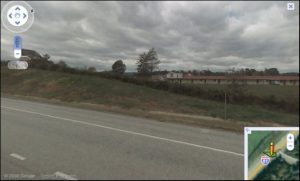 Technology
Technology  Technology
Technology  Our World
Our World 10 Ways Icelandic Culture Makes Other Countries Look Boring
 Misconceptions
Misconceptions 10 Common Misconceptions About the Victorian Era
 Mysteries
Mysteries 10 Strange Unexplained Mysteries of 2025
 Miscellaneous
Miscellaneous 10 of History’s Most Bell-Ringing Finishing Moves
 History
History 10 Great Escapes That Ended Right Back in Captivity
 Weird Stuff
Weird Stuff 10 Fascinating Things You Might Not Know About Spiders
 Food
Food 10 Everyday Foods You Didn’t Know Were Invented by the U.S. Military
 History
History 10 Odd Things Colonial Americans Kept at Home
 Weird Stuff
Weird Stuff 10 Superstitious Beliefs That Once Consumed Entire Cultures
 Technology
Technology 10 Scientific Breakthroughs of 2025 That’ll Change Everything
 Our World
Our World 10 Ways Icelandic Culture Makes Other Countries Look Boring
 Misconceptions
Misconceptions 10 Common Misconceptions About the Victorian Era
Who's Behind Listverse?

Jamie Frater
Head Editor
Jamie founded Listverse due to an insatiable desire to share fascinating, obscure, and bizarre facts. He has been a guest speaker on numerous national radio and television stations and is a five time published author.
More About Us Mysteries
Mysteries 10 Strange Unexplained Mysteries of 2025
 Miscellaneous
Miscellaneous 10 of History’s Most Bell-Ringing Finishing Moves
 History
History 10 Great Escapes That Ended Right Back in Captivity
 Weird Stuff
Weird Stuff 10 Fascinating Things You Might Not Know About Spiders
 Food
Food 10 Everyday Foods You Didn’t Know Were Invented by the U.S. Military
 History
History 10 Odd Things Colonial Americans Kept at Home
 Weird Stuff
Weird Stuff 10 Superstitious Beliefs That Once Consumed Entire Cultures
Ten Times Google Maps Solved the Case
In these ten cases, everything from Street View snapshots to Google Earth satellite imagery played a key role in uncovering crazy truths, finding missing persons, and piecing together unsolved mysteries. Some of these crimes are bizarre, some are tragic, and others are almost too coincidental to believe. But they all share one thing in common: The internet never forgets, and Google has all the receipts.
Related: 10 Times Potential Crime Evidence Was Found at a Thrift Store
10 Paulette’s Story
In November 2020, Paulette Landrieux, an 83-year-old woman with Alzheimer’s, wandered away from her home in Andenne, Belgium. Her husband, Marcel, had left her watching TV while he hung the laundry outside. Paulette suddenly left the house, walked straight past her husband without notice, and disappeared across the street. When Marcel went to check on her later, he had the chilling realization that she was gone.
Despite hours upon hours of searching with neighbors and a K-9 unit, she was nowhere to be found. Days turned into months, months turned into years, and hope completely disappeared. Then, two years later, a neighbor decided to Google it.
The neighbor, who had been exploring the local area on Google Maps for unrelated reasons, noticed something strange in one of the street-level images. There, frozen in time by the Street View camera, was Paulette herself, walking along a quiet road near her neighborhood. The Google Street Car had coincidentally been driving by at the exact moment she had left and snapped a picture, leaving Paulette’s image frozen in time.
It became the first real lead in the case in over two years. With this, investigators were able to retrace Paulette’s steps, leading them to a dry bush. Paulette’s bones were found inside.
It seemed likely that after Paulette had crossed the street, she had tripped and tumbled down the hill on the other side. She eventually got caught in the brambles and didn’t have the strength to pull herself out. So she had lain there until she starved to death, only to eventually be found two years later.[1]
9 The Athol Kidnapping

In 2009, nine-year-old Natalie Maltais thought she was in for an ordinary weekend with her grandmother, Rose Maltais, in Athol, Massachusetts. Instead, Rose called to say one last thing to her daughter and the police: They would “never see her again.” Police issued an arrest warrant for Rose, and the clock started ticking.
The breakthrough came straight from Natalie’s cell phone. Police used GPS tracking to locate its signal, which periodically pinged Rose’s location as the grandmother tried to escape. The coordinates pointed them to an intersection near Route 11 in Natural Bridge, Virginia. However, the GPS data only gave police a radius of about 165 feet (50 meters), not an exact location.
That’s when Athol Police Officer Todd Neale enlisted the help of Deputy Fire Chief Thomas Lozier. Using the coordinates, Lozier went straight to the thing we all know and love: Google Maps Street View. After digitally walking along the supposed route the grandmother had taken, Lozier’s efforts paid off when he spotted a distinctive, red-roofed motel that matched the last known ping: The Budget Inn.
Virginia State Police were alerted, and within a few hours, they found Natalie and Rose in the motel. Natalie was unharmed but shaken, while Rose was arrested on kidnapping charges.[2]
8 The Spanish Murder
In 2023, a gruesome murder in the Spanish village of Tajueco unraveled in the most surreal way. A Cuban man had gone missing, and suspicions were mounting. His family received strange text messages from his phone, claiming he had left Spain for good and discarded the device. Police found the messages unconvincing, but without clear evidence, the case stalled. That is until someone noticed a chilling detail on Google Street View—an image of a person loading what appeared to be a body-shaped bundle into a car.
The Street View car had unwittingly snapped a photo of the moment and captured the most critical evidence in the case. Investigators traced the scene in the image back to a location near the village cemetery. Soon after, the victim’s dismembered remains were discovered buried there. Another sequence of Street View photos in a different area showed someone wheeling a similar bundle in a wheelbarrow, further tying the suspects—his partner and her ex—to the crime. Talk about coincidences!
While the Google images weren’t enough to secure convictions on their own, they provided vital corroboration for other evidence, including physical traces and inconsistencies in the suspects’ stories. The duo was eventually arrested and charged with murder.[3]
7 Jose Arevalo-Viera

In June 2017, a terrifying ordeal unfolded in Milwaukee when a woman, identified only as M.D., was violently abducted from her parked car by Jose Arevalo-Viera and his accomplice, Grabiel Arias-Martinez. Arevalo-Viera broke the car window with a sledgehammer, forced himself inside, and ordered M.D. to drive at knifepoint. And the thing he relied on to get them around town? Google Maps.
As M.D. was being held hostage, she had, in fact, noticed her abductor using Google Maps on his phone. Looking at his phone, she was able to figure out where she was exactly and where she could go. M.D. eventually escaped her kidnappers and made it to a local convenience store nearby. Armed with her testimony, police filed a “geofence warrant,” which required Google to reveal the devices that accessed Maps in the crime’s vicinity. Among the devices flagged, one led investigators directly to Arevalo-Viera. Location history tied him to M.D.’s vehicle, and physical evidence, including fingerprints, confirmed his involvement.
Law enforcement tracked Arevalo-Viera to Louisville, Kentucky, where he tried to run by hiding in the woods. The chase began…And then shortly ended when police arrested him, knife in hand. His accomplice was arrested shortly after. Both men faced deserved charges, with Arevalo-Viera receiving a sentence exceeding 100 years for first-degree sexual assault and kidnapping. Arias-Martinez was also convicted of kidnapping.[4]
6 Paul Mathieson
In January 2021, Paul Mathieson was brutally attacked in the streets of Renfrew, Scotland. Despite being rushed to the hospital, his injuries proved fatal. The murder shocked the small community, and with few witnesses and minimal physical evidence, the case seemed destined to go cold.
Then, a silver Mazda was spotted on CCTV footage leaving the crime scene. The man who owned the vehicle was seen getting in his car sporting his favorite Nike trainers. Investigators turned to Google Maps and digital tracking to follow the trail further. Using location data and Maps’ timeline feature, detectives reconstructed the Mazda’s journey.
The car’s route, matched with other surveillance footage, helped narrow down the time and place of the attack. It also linked the car to its owner—Jamie Anderson, a man with a history of violent behavior. Police brought the suspect in for questioning and then went to search his house. And what do you know? There lay Anderson’s favorite pair of shoes.
After sending them in for testing, forensics found that Paul’s DNA was still on it. So, all in all, they really pieced the case together one step at a time. Anderson confessed to the murder and was charged with culpable homicide.[5]
5 Gioacchino Gammino
For 20 years, Gioacchino Gammino, an Italian mafia boss and member of the Sicilian mafia group Stidda, evaded capture. Gammino escaped from a Rome prison in 2002 and became one of Italy’s most wanted fugitives. Under the alias “Manuel,” he began a new life in Galapagar, Spain. Despite staying under the radar for years, he wasn’t taken down by an obsessive detective but by a regular photo captured by Google Street View.
Authorities had figured Gammino was hiding in Spain, but they didn’t have a solid lead until they stumbled upon a Google Maps image of a man standing outside a grocery store, “El Huerto de Manu.” The man bore a striking resemblance to Gammino. Investigators quickly connected the dots by finding a Facebook page for a nearby restaurant, “Cocina de Manu,” which featured Sicilian dishes and a photo of Gammino in chef’s attire. A scar on his chin confirmed his identity. For someone trying to stay off the radar, you would figure he wouldn’t let his photo be taken, but I digress.
Gammino was arrested in December 2021. Upon his capture, he reportedly told police, “How did you find me? I haven’t even called my family for 10 years.” It turned out that while he could evade phone tracking and law enforcement, he couldn’t escape the all-seeing eye of Google’s Street View cars. After decades on the run, Gammino was finally set to face justice, extradited to Italy to serve a life sentence for murder and mafia-related crimes.[6]
4 Nancy Cooper
In 2008, Nancy Cooper, a 34-year-old mother of two, left her Cary, North Carolina, home for a jog and never returned. Days later, her strangled body was discovered in an unfinished subdivision 3 miles (4.8 km) away. From the beginning, everyone suspected her husband, Brad Cooper, who had some questionable red flag behavior. While Brad denied involvement, claiming he had been at home caring for their children, investigators found evidence on his laptop that told a very different story—a story written, in part, by Google Maps.
Forensic analysis of Brad’s ThinkPad revealed a series of zoomed-in satellite images of the exact location where Nancy’s body was found. These searches occurred just a day before her disappearance and couldn’t be explained away as a coincidence. Coupled with a trove of damning emails—some showing Brad’s controlling behavior and others revealing Nancy’s plans to leave him and return to Canada with their children—the case against Brad began to solidify.
In 2011, Brad was convicted of first-degree murder and sentenced to life in prison, but the saga didn’t end there. The conviction was overturned two years later due to procedural errors during the trial. Rather than face a retrial, Brad pleaded guilty to second-degree murder in 2014 and was sentenced to 12 to 15 years, securing closure for Nancy’s family. His daughters were placed in the custody of Nancy’s twin sister, ensuring they could remember their mother’s face and grow up away from the shadow of their father’s crime.[7]
3 Jessica Runions and Kara Kopetsky
Jessica Runions and Kara Kopetsky were two young women with bright futures whose lives were cut short by a single, damning connection: Kylr Yust. Kara vanished in 2007 after leaving her Missouri high school, and despite exhaustive searches, her case remained unsolved for nearly a decade. Nine years later, in 2016, Jessica, Yust’s then-girlfriend, also disappeared. Her burned car was found in a remote area, intensifying suspicions about Yust. However, without evidence, both cases lingered in limbo—until investigators turned to Google Earth to uncover the truth.
After receiving a tip, authorities focused on a quarry in Belton, Missouri. Using Google Earth’s satellite imagery and other mapping tools, they identified previously inaccessible or overlooked areas of interest. This led search teams to discover skeletal remains belonging to both Jessica and Kara in 2017.
The evidence against Yust was incredibly high before trials began. Witnesses testified about his violent behavior, and the circumstances surrounding both disappearances pointed directly to him. In 2021, he was convicted of second-degree murder for Kara’s death and voluntary manslaughter for Jessica’s, receiving a combined sentence of 45 years. I don’t get how his burning Jessica’s car to get rid of evidence resulted in voluntary manslaughter, but at least he’s not getting out for a while.
Some people just really can’t take rejection well, I suppose.[8]
2 Natalie Bollinger
In December 2017, 19-year-old Natalie Bollinger’s body was found in a secluded wooded area in Colorado, a single gunshot wound to her head. The investigation took an unusual turn when police uncovered a Craigslist ad allegedly posted by Natalie herself. Titled “I want to put a hit on myself,” the ad appeared to be a call for someone to assist in her suicide. This bizarre clue led detectives to Joseph Lopez, who confessed to killing her—but his story didn’t add up.
Lopez claimed that Natalie had hired him to kill her, even providing the weapon and instructions for carrying out the act. However, investigators were skeptical of this narrative. To uncover the truth, they decided to look through his Google Maps Timeline. The data from Lopez’s phone painted a very clear and chilling picture, placing him at the crime scene. With this, it became evident that Natalie had not, in fact, orchestrated her own death.
Faced with this evidence, in 2019, Lopez confessed to shooting Natalie but continued to assert that it was at her request. The court saw straight through his obvious lies, convicted Lopez of second-degree murder, and sentenced him to 48 years in prison.[9]
1 The Cameroonian Soldiers
In 2018, a deplorable video surfaced with a terrible sight: Cameroonian soldiers executing two women and their children in cold blood on baseless accusations. The soldiers, dressed in military uniforms, accused the victims of being linked to the terrorist group Boko Haram before blindfolding them, leading them down a dirt path, and shooting them at point-blank range.
The footage went viral, sparking outrage worldwide, but the Cameroonian government quickly dismissed it as fake. Officials claimed the soldiers weren’t theirs, the video had been manipulated, and the location couldn’t even be identified. However, investigative journalists at BBC Africa Eye were sure this was more sinister than a viral video prank.
Using a combination of open-source intelligence (OSINT) tools, satellite images, and forensic analysis, the team pieced together a timeline that left the corrupt officials no room for denial. They began by analyzing the topography visible in the video, comparing the background ridgelines with satellite images from Google Earth. After painstaking work, they pinpointed the execution site to Zelevet, a village in northern Cameroon. Then, by examining the length and angle of the shadows in the video, they calculated the time of day and narrowed it to March or April 2015. Their great work left those Cameroonian officials shamed and embarrassed on a global scale.
The next step was identifying the perpetrators. By analyzing the soldiers’ uniforms, weapons, and insignia, the journalists confirmed they belonged to the Cameroonian military. They even matched one soldier’s Facebook photos to his appearance in the video. The evidence was undeniable.
Confronted with these findings, the Cameroonian government was forced to reverse its stance. Seven soldiers were arrested and charged, and in 2020, four were convicted and sentenced to 10 years in prison. Another soldier who filmed the execution received a lighter sentence. Even after being humiliated in front of the entire world, the Cameroonian officials still let the soldiers off easy.[10]








